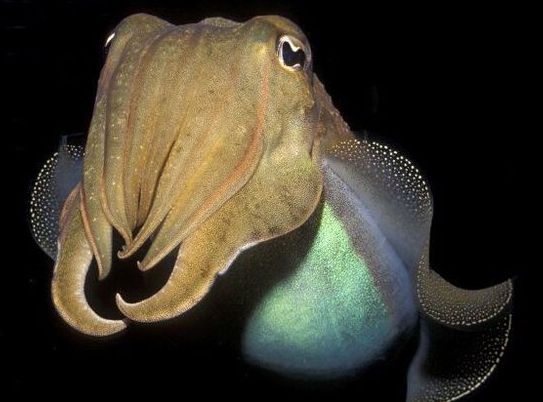A new test of cephalopod smarts has reinforced how important it is for us humans to not underestimate animal intelligence.
😃
Scientists have demonstrated how to structure light such that its polarization behaves like a collective of spins in a ferromagnet forming half-skyrmions (also known as merons). To achieve this, the light was trapped in a thin liquid crystal layer between two nearly perfect mirrors. Skyrmions, in general, are found, e.g., as elementary excitations of magnetization in a two-dimensional ferromagnet but do not naturally appear in electromagnetic (light) fields.
One of the key concepts in physics, and science overall, is the notion of a “field” that can describe the spatial distribution of a physical quantity. For instance, a weather map shows the distributions of temperature and pressure (these are known as scalar fields), as well as the wind speed and direction (known as a vector field). Almost everyone wears a vector field on their head — every hair has an origin and an end, just like a vector. Over 100 years ago L.E.J. Brouwer proved the hairy ball theorem which states that you can’t comb a hairy ball flat without creating whorls, whirls (vortices), or cowlicks.
In her new book, Brandy Schillace recalls the unbelievable legacy of a Cold War era neurosurgeon’s mission to preserve the soul.
Previous ideas about how to make these hypothetical devices have required exotic forms of matter and energy that may not exist, but a new idea for a warp drive that doesn’t break the laws of physics may be theoretically possible. However, it may not be practical in the foreseeable future because it requires ultra dense materials.
Summary: Study identifies 40 genes in mice that actively suppress axon regeneration in the central nervous system.
Source: Yale
LIVE: Starship SN10 Flight Test
Posted in space travel
SN10 Flight Test LIVE STREAM
SpaceX is set to launch the Starship SN10 prototype to an altitude of approximately 10 kilometers. A launch attempt is possible between 9 am and 6 pm Central time on Wednesday. However, as with testing, there is always a chance that teams could decide to stand down and try again on a different day.
Updates: https://forum.nasaspaceflight.com/index.php?topic=52398.
Israeli genealogy company MyHeritage has released a groundbreaking new feature to animate faces in still photos.
From its power as an antioxidant through to SIRT activation and beyond, resveratrol as a health aid and as an anti-aging compound is a word that has made many headlines and is the topic of many conversations.
From forming the basis of an excuse to drink bottle after bottle of red wine, to a newspaper selling headline it has bee around for decades now and every time it seems to be slipping away, a new insight arrives to bring it back as strong as ever.
Indeed, it is one of the most popular supplements currently available.
So in this video I bring together a background of what it is, when we discovered it and where you can find it naturally, along with a whole raft of studies showing what it can possibly do for the human body.
So I hope this clears up any loose ends for you and if you want to know more about Sirtuins why not check out this video… https://youtu.be/cNUFesiescc Do you supplement with this or any other products, why not let us know your regime below…
Interesting gadgets and inventions
Posted in innovation









